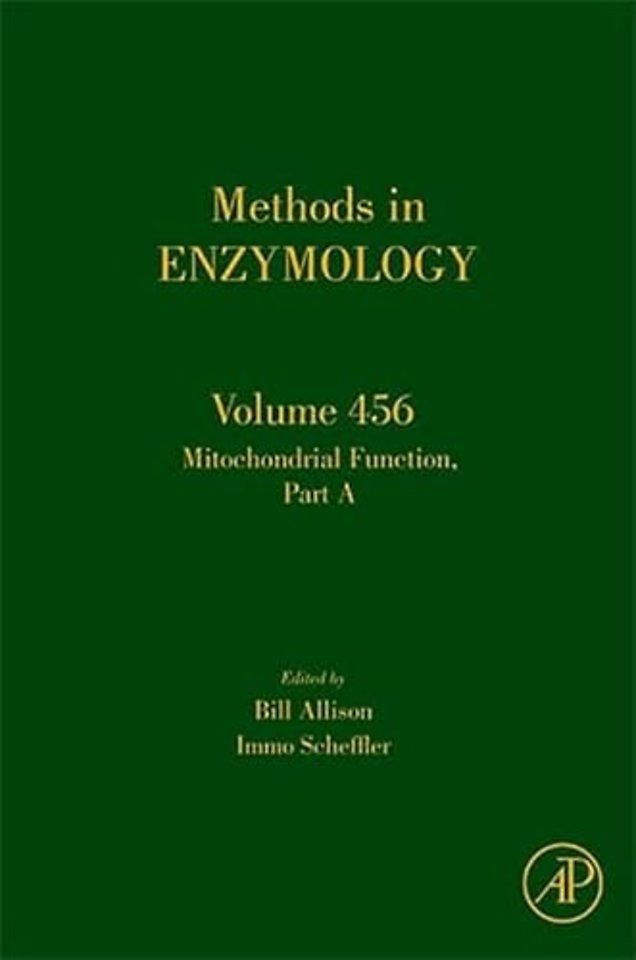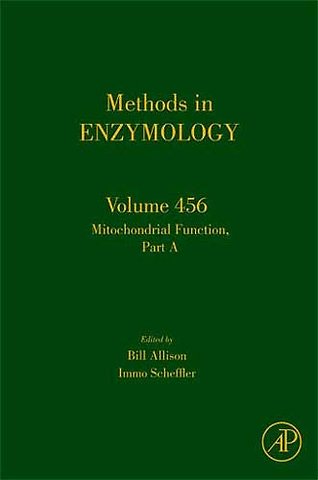Part A: Electron Transport Complexes<br>1. Visualizing functional flexibility by three dimensional electron microscopy: reconstructing Complex I of the mitochondrial respiratory chain; M. Radermacher <br>2. Electron tomography of the mitochondrion; T. Frey, G. Perkins, M. Sun <br>3. Mid-IR vibrational studies of complex I; D. Marshall, P. Rich <br>4. Electron transfer in respiratory complexes resolved by an ultra-fast freeze-quench approach; N. Belevich, M. Verkhovskya, M. Verkhovsky <br>5. Use of ruthenium photooxidation techniques to study electron transfer in the cytochrome bc1 complex; F. Millett, B. Durham, C. Yu, L. Yu <br>6. Use of ruthenium photoreduction techniques to study electron transfer in cytochrome oxidase; F. Millett, B. Durham, R. Gennis <br>7. Mass spectrometric characterization of subunits of electron transfer complexes that are encoded in the mitochondrial genome; J. Carroll, J. Walker <br>8. The assembly of respiratory chain complexes studied by GFP-tagged subunits, L. Nijtmans <br>9. Two-dimensional native electrophoresis for functional assays of mitochondrial complexes; W. Wittig, H. Schägger <br>10. Reliable assay for complex I in human blood lymphocytes and skin fibroblasts; L. Elly, A. de Wit, W. Sluiter <br>11. Purification of the cytochrome c reductase/cytochrome c oxidase supercomplex of yeast mitochondria; E. Boekema and H. Braun <br>12. Supercomplex organization of the yeast mitochondrial respiratory chain complexes and the ADP/ATP carrier proteins; R. Stuart <br>13. Role of cysteine desulfurase Nfs1 in human mitochondrial Fe-S protein biogenesis; O. Stehling, R. Lill <br>14. Identification and properties of the novel 2Fe-2S center in the outer membrane protein, mitoNEET; S. Wiley, M. Rardin, J. Dixon <br>15. Nucleotide-dependent iron-sulfur cluster biogenesis in mitochondria; D. Pain <br>16. Preparation of samples for EPR and Mössbauer spectroscopy of intact Saccharomyces cerrevisiae mitochondria; J. Garber-Morales, R. Miao, G. Holmes-Hampton, P. Lindahl<br>17. Fluorescence correlation spectroscopy to probe mitochondrial mobility and intramatrix protein diffusion; P. Willems, W. Koopman<br>18. Characterization of alternative complex I of Plasmodium falciparum mitochondria; N. Fisher, A. J. Warman, S. Ward, G. Biagini<br>19. Analysis of respiratory chain complex assembly using radiolabeled nuclear- and mitochondrial-encoded subunits; M. McKenzie, M. Lazarou, M. Ryan <br><br>Part B: Reactive Oxygen Species <br>20. Measuring redox changes to mitochondrial protein thiols using Redox DIGE; T. Hurd, K. Lilley, M. Murphy <br>21.Measuring the effects of Hepatitis C proteins on mitochondrial electron transport and production of reactive oxygen species; S. Weinman<br>22. Paraquat induced production of reactive oxygen species in brain mitochondria; D. Drechsel, M. Patel <br>23. The uptake and interactions of the redox cycler paraquat with mitochondria; H. Cocheme; M. Murphy.<br>24. Superoxide production by rat brain and skeletal muscle mitochondria; W. Kunz<br>25. Quantitation, localization, and tissue specificities of mitochondrial reactive oxygen species production; C. Mathews<br>26. The reaction mechanisms of electron transfer and superoxide generation in the cytochrome nc1 complex; D. Xia, S. Yang, Y. Yin, L. Yu; C. Yu <br>27. Measurement of superoxide formation by mitochondrial complex I of Yarrowia lipolytica; S. Dröse, A. Galkin, U. Brandt <br>28. An improved method for introducing point mutations into the mitochondrial cytochrme b gene to facilitate studying the role of cytochrome b in the formation of reactive oxygen species; B. Trumpower

